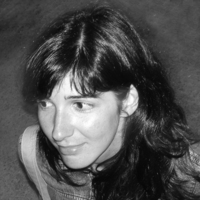Papers by Stavros A Alifragkis

The Journal of Architecture, 2013
Economic progress in postwar , post-civil-war Greece, kick-started by the Marshall Plan and maint... more Economic progress in postwar , post-civil-war Greece, kick-started by the Marshall Plan and maintained by the rapid growth of tourism, was deemed a vital precondition for the country's modernisation. In 1951, the Government re-launched the National Tourism Organisation to attract foreign visitors and invigorate domestic tourism among the rising middle class. The organisation carried out a building programme for a network of leisure hotspots near archaeological sites, places of natural beauty and along major motoring routes. The state-run Xenia chain, comprising hotels, motels, travel stops, pavilions, organised beaches and holiday camps, spearheaded the Government's policy for the modernisation of leisure infrastructure, setting the standards for all ensuing private initiatives. This paper underlines the intertwining of western-oriented politics, modernist architecture and newly introduced cultures of leisure in the construction of the image of modern Greece. Cold-war politics recognised Greece's prosperity as a barrier against communist expansion. Tourism thus reweaved the country's war-torn social fabric, by spurring economic growth and educating the emerging urban middle-class about modern life. The image of postwar Greece as an ideal tourist destination was promoted by capitalising on the enduring construct of continuity with the past and a newly introduced affiliation with Western modernity and Americanism in particular. 595
Forms of the Cinematic, 2021

Architecture and Culture, Mar 1, 2015
This article proposes a way for producing cinematic representations of contemporary urban environ... more This article proposes a way for producing cinematic representations of contemporary urban environments based on the close study of Dziga Vertov’s mechanisms for story and plot development as instantiated in Man with a Movie Camera. Our investigation of screen cities and the way the image of the modern metropolis is constructed in cinema focuses on the examination of, and the experimentation with, the screen language of the “city symphony” film genre. This is pursued in two parts that tackle distinct ‐ but to a certain extent complementary ‐ aspects of the research. The first part of the article ‐ the analytical segment‐ summarizes the results of the shot-by-shot formal analysis and the statistical processing of the accumulated metadata for Vertov’s cinematic text with the aim of mining relevant concepts for an informed discussion on aspects of film form and style for “city symphonies.” The second part of the article ‐ the experimental one ‐ attempts to transliterate the results of our analysis into the novel language of nonlinearity for the digital, interactive screen. This is deemed particularly important because, as this article suggests, a better understanding of the “city symphony” form will enable the production of more immersive filmic constructs about current urban phenomena.
Architecture: Journal of the Thessaloniki Chamber of Architects [in Greek], Dec 2002
5sns)oor-o) 5sdgrl gd3 @V ? 3ilrNovv33ro NuNolxrrxdv AoJovv 3 Aor H3ovxr Hxrvordru hnX?L 3cc l|)t... more 5sns)oor-o) 5sdgrl gd3 @V ? 3ilrNovv33ro NuNolxrrxdv AoJovv 3 Aor H3ovxr Hxrvordru hnX?L 3cc l|)t ll,luur Jtrt0ll tl -{ m X o M -'t I -{ m x o M -9 ,1b 56 56
Polymichano: The Journal of the Polytechnic School of the Aristotle University of Thessaloniki, Feb 2003

Scroope 18: Cambridge Architecture Journal, Jun 2006
Shooting a film, to the extent that this is possible, should be
a poetic event. Exploring the id... more Shooting a film, to the extent that this is possible, should be
a poetic event. Exploring the ideological function of cinema
does not shift the emphasis away from the aesthetics and,
conversely, seeking a particular aesthetic result does not
conflict with the communication of potent ideological-political
beliefs through film. When my film 'Oi Kynighoi' premièred,
it was received with scepticism from certain circles
of the Greek Left. There is a scene where a party of people
in barges drifts downstream, holding red flags and singing.
Someone commented that 'Revolution goes for a stroll',
implying that this overly aesthetic approach was void of
any political meaning. Yet Fyodor Dostoevsky’s claim that
'beauty would save the world' still remains topical. There
is no such thing as a dichotomy between content and form.
Such dilemmas do not exist.

Proceedings of the International Biennial Conference: Hybrid City 2013: Subtle rEvolutions, May 2013
Our research focuses on the development of a set of guidelines for the collaborative, automatic a... more Our research focuses on the development of a set of guidelines for the collaborative, automatic and manual annotation of media with descriptive metadata that foreground the spatial attributes of moving images. Guidelines are introduced in the form of controlled vocabularies, sourced from our gleaning of relevant literature on urban history, theory and criticism. Spatial attributes, coupled with aspects of film style and media content, form a novel heuristic tool for the annotation, the statistical processing and the visualisation of metadata about the Greek city on film. Our aim is to set up an on-line, digital archive about the Greek city in the form of a non-hierarchical pool of database resources. The archive will comprise moving images from different narratological contexts (newsreels, documentaries, fiction, etc.). Media recycling emerges in relevant literature as a crucial aspect of the digital archive of the future. Our pilot prototype investigates the communicative potential of multimedia databases by experimenting with the creative reconfiguration of our database resources. Here, database assets, annotated with descriptive metadata that foreground aspects specific to the study of the Greek city, are reconfigured on the fly and previewed on the computer screen, the tablet or the mobile phone. Our pilot production puts forward a novel and creative way for reusing archival material stored in digital, multimedia databases. The examination of the Greek city via the moving image and the ensuing processing of the accumulated metadata will afford researchers in the fields of media and urban studies a broader understanding of how the moving image of the Greek city has been constructed, deconstructed and reconstructed over the past few decades.

As early as the 1920s, avant-garde film-makers started to compose visual cinematic poems that enc... more As early as the 1920s, avant-garde film-makers started to compose visual cinematic poems that encapsulated the dynamics of modernity. In works such as Berlin: die Sinfonie der Großstadt (Ruttmann, 1927), elaborate editing techniques and expressionistic framing were employed to capture the emerging urban terrain and bombard the senses with the rhythms and patterns of contemporary everyday life, emphasising the futurist aesthetics of machinery and infrastructure.
Apart from this special interest in the depiction of the urban form, city symphonies share certain stylistic features. Often employing a ‘dawn to dusk’, ‘day in the life’ structure, the filmmakers experimented with the visual vocabulary and the narrative grammar and syntax that one comes across in neighbouring film-genres such as avant-garde experimental moving image works, travelogues and documentaries. Yet while set designs were sacrificed for on site locations, and leading roles and professional actors dispensed with altogether, city symphonies were less about documenting reality as reality is, and more about producing alternative realities. These movies construct imaginary, artificial celluloid urban landscapes, freed from the restrictions of space and time.
Scroope 19: Cambridge Architecture Journal, Jun 1, 2009
Digital Formalism. Die kalkulierten Bilder des Dziga Vertov 3/2009, 2009

Spotlights on Russian and Balkan Slavic Cultural History, 2009
In the 1920s fascination with the city resulted in an unprecedented increase in movingimage wo... more In the 1920s fascination with the city resulted in an unprecedented increase in movingimage works that encapsulated the dynamics of modernity. Such formalistic experimentationwith the iconography of urban landscapes is generically referred to as City Symphonies. Dziga Vertov‟s Man with the Movie Camera (USSR, 1929), a film that epitomises thecharacteristics of this genre, acts as a concrete and particular example of an attempt toconstruct a cinematic image of the ideal socialist city of the future, through the depiction of contented citizens in the act of 'building Socialism in one country'. The shot-by-shot formalist analysis of Vertov‟s film – conducted as part of an on-going doctoral research project at the University of Cambridge – highlights two termsspecific to cinema, which play a central role in the construction of Vertov‟s vision of collective happiness. Punctus-contra-punctum montage – a working definition for atechnique that exploits analogies in form or content between adjacent clips – and Lev Kuleshov's
artificial landscapes – the consistent filmic landscapes composed of movingimages – offer a way of producing meaningful thematic sequences. This is considered in parallel with the study of theories of city-planning, especially the urbanist-deurbanist dispute, with special focus on the interpretation of Marxist doctrines about the city. In particular, this paper discusses the relationship between private space and public space, aswell as the new role industry and infrastructure assumed in the construction of Vertov‟s urban cinematic utopia. In addition, it aims to demonstrate how novel architectural types, such as the worker's club, pull together the urban and social fabric of his filmic city.
Digital Creativity, Jan 1, 2006
Conference Presentations by Stavros A Alifragkis

INTER[SECTIONS]. A Conference on Architecture, City and Cinema Conference Proceedings. Porto, September 11-13, 2013, Sep 11, 2013
This paper presents a novel analytical toolkit for researching the multiple reconstructions of th... more This paper presents a novel analytical toolkit for researching the multiple reconstructions of the urban terrain on the canvas of the screen. Our conceptual tool aids the mining and retrieval of spatial cues embedded in the cinematic frame by means of a rigorous annotation strategy with descriptive metadata. Metadata fields have been sourced from our gleaning of relevant literature on urban history and theory. This method is modelled on an extensive study of the formal and stylistic characteristics of city symphonies, conducted previously by the first author. The examination of the cinematic reconfiguration of Athens is utilised here as a proof-of-concept case-study that demonstrates the heuristic value of the proposed method and showcases potential applications with on-line digital media content delivery. Our rigorous and systematic analyses and interpretations of two tourist documentaries from the late 1960s, John Christian’s ‘White City’ (Greece, 1968) and Carl Dudley’s ‘Wide Wide World: Blue Holiday’ (USA, 1965), are expected to sustain a more comprehensive understanding of the way the cinematic image of the city was constructed, deconstructed and reconstructed during the period of optimism that was associated with the rapid development of the Greek city alongside the growth of the Greek economy. The shot-by-shot neo-formalist analysis of these two works and the ensuing statistical processing of the accumulated metadata afford us the opportunity to consider how spatial narratives are structured. In this respect, our research puts forward a coherent proposal for dealing with archival material creatively, drawing extensively on literature on urban history and theory.

Conference of the International Forum on …, 2012
‘White City’, Christian’s documentary commissioned by the Greek National Tourism Organisation, e... more ‘White City’, Christian’s documentary commissioned by the Greek National Tourism Organisation, emphasises thebright sun and the bright marble so as to rebrand the Greek capital as a modern tourist utopia. The cinematic portrayal of modern Athens in touristic films offers a rich cultural database for drawing conclusions about film-induced tourism and city branding policies for the metropolis of the future. Investigating the processes involved in reinventing identities for historical cities, via the moving image, for the tourist, lies at the very heart of this paper’s aims. This analysis proposes a toolkit for tracing transformations that have to do with the shifting mentality of thetimes: moving from culture to recreation. Architecture portrayed in touristic films provides a familiar backdrop for the international audience and propagandises national
continuity. Christian’s film is used advisedly as it proposes acritical reconsideration of policy-making for the branding of historic cities and mature destinations.
This paper examines how the notion of the archive is reconstructed in the context of a multimedia... more This paper examines how the notion of the archive is reconstructed in the context of a multimedia database for architecture and the city. It investigates the aesthetic and ideological constitution of the archive as a list, the nature of the historical evidence that is rescued from oblivion and transcribed into the conceptual setting of the database and, finally, the database as a storytelling mechanism that allows for multiple narrations. A pilot database comprising primarily Greek newsreels from the 1950s and 1960s acts as the touchstone against which our research questions are raised. The results represent work in progress.

11th Conference of the National Institute of Greek Architects, Technical Chamber of Greece, Apr 2011
Η προτεινόμενη εισήγηση παρουσιάζει μια συνεκτική πρόταση για τη χρήση της κινούμενης εικόνας στη... more Η προτεινόμενη εισήγηση παρουσιάζει μια συνεκτική πρόταση για τη χρήση της κινούμενης εικόνας στην εκπαίδευση του αρχιτέκτονα σήμερα. Με τον όρο κινούμενη εικόνα περιγράφεται τόσο το προϊόν της παραδοσιακής κινηματογραφικής παραγωγής (μυθοπλασία ή τεκμηρίωση) όσο και σύγχρονα ψηφιακά έργα πειραματικού χαρακτήρα (διαδραστικά ή μη έργα τέχνης). Η εισήγηση κάνει μία σύντομη ιστορική αναδρομή στη χρήση παραδοσιακών εκφραστικών μέσων στην εκπαίδευση (σκίτσο, μακέτα, φωτογραφία) και σταχυολογεί τις ανάγκες που υπαγορεύουν τη χρήση της κινούμενης εικόνας ως επικουρικό εργαλείο ανάλυσης του χώρου αλλά και αναπαράστασης μιας σύγχρονης αρχιτεκτονικής πρότασης. Η εισήγηση επισημαίνει τους πολλαπλούς ρόλους που δύναται να διαδραματίσει η χρήση της κινούμενης εικόνας στην εκπαιδευτική διαδικασία: α. εικονογραφεί μια ιστορία της αρχιτεκτονικής και της πολεοδομίας τόσο ως τεκμήριο/ντοκουμέντο όσο και ως μεταφορά μιας κατασκευασμένης/σκηνοθετημένης εμπειρίας του χώρου. β. Η κινούμενη εικόνα αποτελεί ένα ακόμη εκφραστικό μέσο στο πλούσιο οπλοστάσιο του αρχιτέκτονα στην προσπάθειά του ανάλυσης και τελικά παραγωγής νέου χώρου. Στα παραπάνω οφείλει να προστεθεί η δυνάμει αναστοχαστική δράση μίας εκ των υστέρων καταγραφής της συνθετικής διαδικασίας με κινούμενη εικόνα και αφήγηση. Τέλος, σημαντική πλέον είναι η ανάγκη ο αρχιτέκτων μηχανικός να μπορεί να επικοινωνεί την αρχιτεκτονική του στο ευρύτερο κοινωνικό σύνολο με έναν εύληπτο και σύγχρονο τρόπο. Ήδη από το 1928 ο Sigfried Giedion είχε αναγνωρίσει αυτήν την ανάγκη και είχε προτείνει την κινούμενη εικόνα ως το ενδεικτικότερο μέσο. Η πρωτοτυπία της εισήγησης έγκειται στα εξής: α. καλύπτει την εκκρεμότητα μιας αποτίμησης της χρήσης της κινούμενης εικόνας στη διδασκαλία με τις δύο προαναφερθείσες ιδιότητές της, που αν και εισήχθη πολύ πρόσφατα στα εκπαιδευτικά προγράμματα σχολών/τμημάτων, παρουσιάζει ήδη ενδιαφέροντα αποτελέσματα, β. εμπλουτίζει, ως εκ τούτου, τη σχετικά φτωχή ελληνική βιβλιογραφία, γ. αντιμετωπίζει την κινούμενη εικόνα ως μαθησιακό εργαλείο παρά ως πεδίο έρευνας του κοινού τόπου μεταξύ αρχιτεκτονικής και κινηματογράφου, πράγμα σύνηθες στη διεθνή βιβλιογραφία. Για το λόγο αυτό συγκεντρώνει και συγκρίνει στοιχεία από προπτυχιακά και μεταπτυχιακά προγράμματα σπουδών των τελευταίων ετών σχολών της Ελλάδας (Αθήνα, Πάτρα) και της Αγγλίας (Κέιμπριτζ).







Uploads
Papers by Stavros A Alifragkis
a poetic event. Exploring the ideological function of cinema
does not shift the emphasis away from the aesthetics and,
conversely, seeking a particular aesthetic result does not
conflict with the communication of potent ideological-political
beliefs through film. When my film 'Oi Kynighoi' premièred,
it was received with scepticism from certain circles
of the Greek Left. There is a scene where a party of people
in barges drifts downstream, holding red flags and singing.
Someone commented that 'Revolution goes for a stroll',
implying that this overly aesthetic approach was void of
any political meaning. Yet Fyodor Dostoevsky’s claim that
'beauty would save the world' still remains topical. There
is no such thing as a dichotomy between content and form.
Such dilemmas do not exist.
Apart from this special interest in the depiction of the urban form, city symphonies share certain stylistic features. Often employing a ‘dawn to dusk’, ‘day in the life’ structure, the filmmakers experimented with the visual vocabulary and the narrative grammar and syntax that one comes across in neighbouring film-genres such as avant-garde experimental moving image works, travelogues and documentaries. Yet while set designs were sacrificed for on site locations, and leading roles and professional actors dispensed with altogether, city symphonies were less about documenting reality as reality is, and more about producing alternative realities. These movies construct imaginary, artificial celluloid urban landscapes, freed from the restrictions of space and time.
artificial landscapes – the consistent filmic landscapes composed of movingimages – offer a way of producing meaningful thematic sequences. This is considered in parallel with the study of theories of city-planning, especially the urbanist-deurbanist dispute, with special focus on the interpretation of Marxist doctrines about the city. In particular, this paper discusses the relationship between private space and public space, aswell as the new role industry and infrastructure assumed in the construction of Vertov‟s urban cinematic utopia. In addition, it aims to demonstrate how novel architectural types, such as the worker's club, pull together the urban and social fabric of his filmic city.
Conference Presentations by Stavros A Alifragkis
continuity. Christian’s film is used advisedly as it proposes acritical reconsideration of policy-making for the branding of historic cities and mature destinations.
a poetic event. Exploring the ideological function of cinema
does not shift the emphasis away from the aesthetics and,
conversely, seeking a particular aesthetic result does not
conflict with the communication of potent ideological-political
beliefs through film. When my film 'Oi Kynighoi' premièred,
it was received with scepticism from certain circles
of the Greek Left. There is a scene where a party of people
in barges drifts downstream, holding red flags and singing.
Someone commented that 'Revolution goes for a stroll',
implying that this overly aesthetic approach was void of
any political meaning. Yet Fyodor Dostoevsky’s claim that
'beauty would save the world' still remains topical. There
is no such thing as a dichotomy between content and form.
Such dilemmas do not exist.
Apart from this special interest in the depiction of the urban form, city symphonies share certain stylistic features. Often employing a ‘dawn to dusk’, ‘day in the life’ structure, the filmmakers experimented with the visual vocabulary and the narrative grammar and syntax that one comes across in neighbouring film-genres such as avant-garde experimental moving image works, travelogues and documentaries. Yet while set designs were sacrificed for on site locations, and leading roles and professional actors dispensed with altogether, city symphonies were less about documenting reality as reality is, and more about producing alternative realities. These movies construct imaginary, artificial celluloid urban landscapes, freed from the restrictions of space and time.
artificial landscapes – the consistent filmic landscapes composed of movingimages – offer a way of producing meaningful thematic sequences. This is considered in parallel with the study of theories of city-planning, especially the urbanist-deurbanist dispute, with special focus on the interpretation of Marxist doctrines about the city. In particular, this paper discusses the relationship between private space and public space, aswell as the new role industry and infrastructure assumed in the construction of Vertov‟s urban cinematic utopia. In addition, it aims to demonstrate how novel architectural types, such as the worker's club, pull together the urban and social fabric of his filmic city.
continuity. Christian’s film is used advisedly as it proposes acritical reconsideration of policy-making for the branding of historic cities and mature destinations.
infrastructure that set the standards for all ensuing private initiative. This paper underlines the intertwining of western oriented politics, modernist architecture and newly introduced cultures of leisure in the construction of the image of modern Greece. In doing so, it follows three interdependent lines of inquiry: (1) Location: varied types of accommodation designed to suit and foreground local particularities created a nation-wide network of destinations for leisure, (2) Design: wide-ranging criteria were introduced to locate potential building sites and secure aesthetic results for the building itself and the public space that it generated, (3) Society: leisure infrastructure was intended for
the domestic middle-class visitor as well as the international tourist. In 1954, the National Tourism Organisation introduced guided tours to prominent destinations combining leisure with cultural activities. Cold War politics recognised Greece’s prosperity and modernisation as a barrier against Communist expansion. Hence, the Organisation’s activities not only reweaved the worn social fabric inherited by World War II and the Civil War, but also educated the urban middle-class about modern life, by forging a new national identity based on both the construct of continuity with the past and Greece’s firm anchoring to the West, sealed with the 1963 arrival of Conrad Hilton’s hotel chain in Athens.""